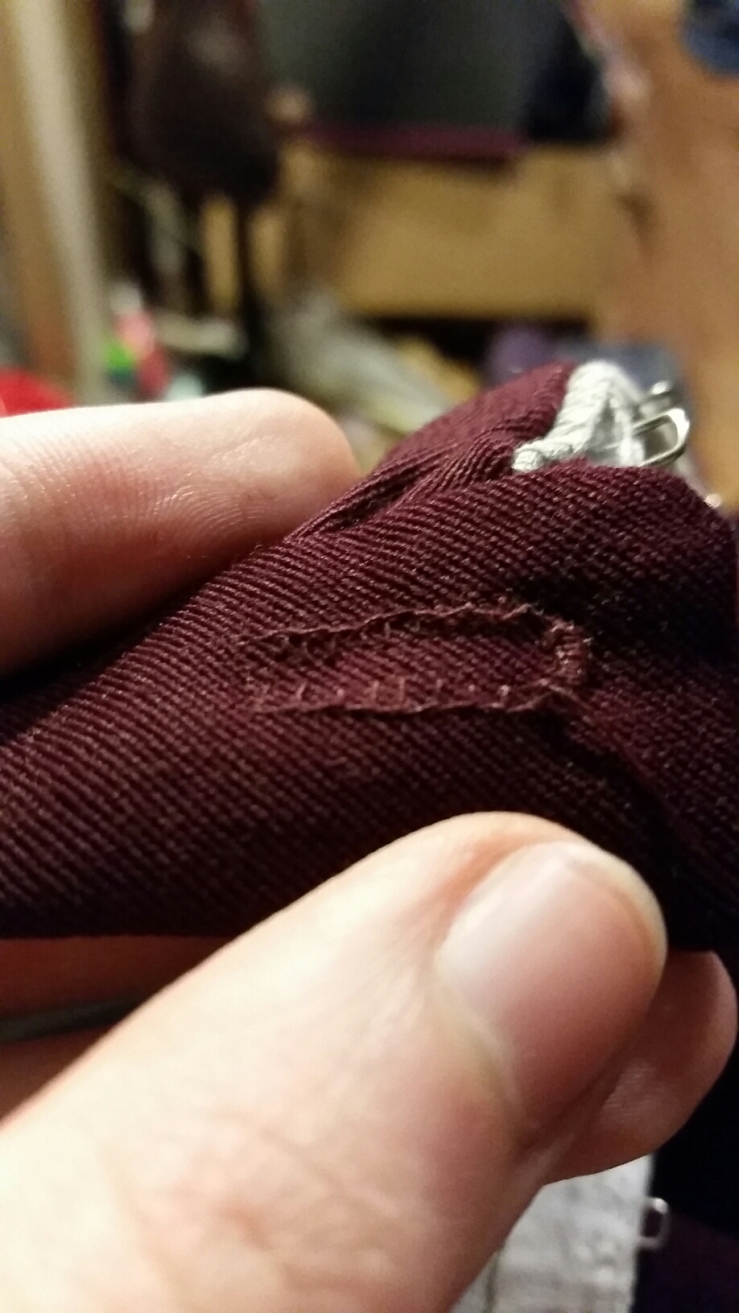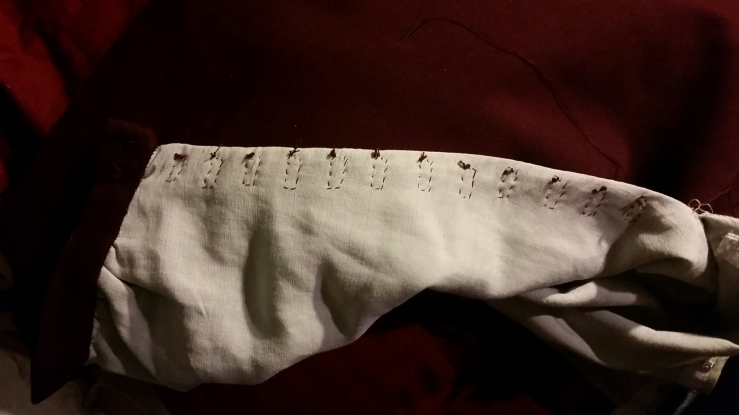Here’s my not-actually-that-extensive research and work on 1630s-style buttonholes. Mine didn’t come out quite how I wanted, but I’m pretty happy with them overall– they’re definitely a huge improvement over hook and eye tape.
So– some historical examples:



So– from those examples, it seems clear that buttonholes were worked in plain buttonhole stitch, probably reinforced at the ends, often with “buttonhole bar” stitching. The buttonholes are fairly long in proportion, and quite close together.
Here are my buttonholes:
The first one came out much too loosely spaced, so I sewed a second round (basically identical but offset slightly). I tried to turn corners with the buttonhole stitches, but it didn’t really work. This one was the hardest; the waistband is more than twice the thickness of the main garment. Spacing might have been easier to maintain or less important to mind if I’d used something more like buttonhole floss, but I had this thread that was just the right color on hand.

Hook and eye tape removed, and buttonhole outlines basted in (per advice in The Tudor Tailor). I measured all of these against a template that fit through the buttonholes in my doublet, but they should have been much longer, as it turned out– maybe 50% longer, for the buttons I intended to use, maybe even more. The breeches, by the way, are dark purple wool on the outside and pale sage-green “linen blend” (I think linen/cotton) on the inside.

The home stretch! All thirteen buttonholes sewn, cut using a buttonhole-chisel tool (I don’t know its real name) and trimmed using buttonhole scissors. The focus in this photo isn’t great, but you can see my buttonholes came out nicely square once I started using the buttonhole-bar ends. I’d planned to use curtain-trim bobbles, which look like very plain thread-wrapped buttons prone to fuzzing (I did this on my doublet), but it turned out there was no way at all they were going to fit through the holes I’d made. In my sewing box, I found a bag of little wooden beads– these are each about the size of my fingertip– which had been given to me for possible thread-wrapping bases, and, with a lot of trimming and stretching and squeezing, the buttonholes were just the right size for these beads. So, a lot plainer than I’d intended, and the beads are much shinier than I’d like (I guess maybe I can sand them some), but behold, my breeches will no longer unfasten themselves, and the waistband fits properly.

And that is the story of my buttonholes, thus far.